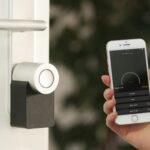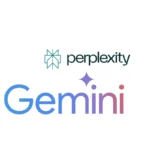When it comes to creating a fast, reliable, and secure home or office network, Ubiquiti’s UniFi lineup stands out as one of the best options available. Two of the most popular all-in-one gateways in the UniFi family are the UniFi Dream Router (UDR) and the UniFi Dream Machine (UDM).
At first glance, these devices seem similar — both combine routing, switching, Wi-Fi access, and UniFi network management into a single unit. However, they target different users and performance levels. This comparison will help you decide which one best fits your needs.
Overview of Each Device
UniFi Dream Machine (UDM)
The UniFi Dream Machine was Ubiquiti’s first all-in-one gateway solution, designed for users who wanted enterprise-grade performance in a simplified package. It combines:
- A high-performance router
- A managed 4-port Gigabit switch
- A dual-band Wi-Fi 5 (802.11ac) access point
- The UniFi Network Controller software
Because of its stronger CPU and higher throughput, the UDM is ideal for larger homes and small businesses that need more capacity and stability.
UniFi Dream Router (UDR)
The UniFi Dream Router is a newer, more affordable model that builds on the UDM’s concept but adds Wi-Fi 6 (802.11ax) support and a few modern upgrades. It’s designed for smaller networks or users who want the latest wireless technology without the higher price tag.
The UDR also integrates the UniFi OS Console, allowing you to manage multiple UniFi applications — including Network, Protect, Talk, and Access — all from one interface.
Hardware Comparison
| Feature | UniFi Dream Router (UDR) | UniFi Dream Machine (UDM) |
|---|---|---|
| CPU | Dual-core ARM Cortex-A53 @ 1.35GHz | Quad-core ARM Cortex-A57 @ 1.7GHz |
| RAM | 2 GB | 2 GB |
| Storage | 128 GB eMMC + microSD expansion | 16 GB eMMC |
| Wi-Fi Standard | Wi-Fi 6 (802.11ax) | Wi-Fi 5 (802.11ac) |
| Ethernet Ports | 4x Gigabit LAN, 1x WAN | 4x Gigabit LAN, 1x WAN |
| PoE Support | 2x PoE Out (15W each) | None |
| Max Throughput | ~700 Mbps | ~850+ Mbps |
| UniFi OS Support | Full (Network, Protect, Talk, Access) | UniFi Network only |
| Price (approx.) | $199 USD | $299 USD |
(Specs compiled from Metric Networks, UniHosted, and Ubiquiti documentation.)
Performance and Use Cases
- Speed and Processing Power:
The UDM’s quad-core processor gives it a slight edge in raw routing performance, making it better for gigabit internet connections or environments with many connected devices. - Wireless Performance:
The UDR’s Wi-Fi 6 support provides better range, speed, and efficiency for modern devices, especially in dense environments like apartments or smart homes. - Network Management:
The UDR supports the full UniFi OS suite, allowing you to integrate cameras (UniFi Protect), VoIP (UniFi Talk), and access control (UniFi Access). The UDM, while powerful, is limited to the UniFi Network app. - Power over Ethernet (PoE):
The UDR can power two PoE devices — perfect for adding UniFi cameras or access points without extra adapters. The UDM lacks this feature.
Software and Ecosystem
Both devices run UniFi OS, but the UDR has a more modern implementation that supports multiple apps. The UDM’s version is more limited and can’t run additional UniFi services beyond network management.
If you plan to expand your UniFi ecosystem — for example, by adding security cameras or access control — the UDR is the better long-term choice.
Which One Should You Choose?
| Scenario | Recommended Device |
|---|---|
| Small home or apartment with Wi-Fi 6 devices | UniFi Dream Router (UDR) |
| Medium to large home or small office with high-speed internet | UniFi Dream Machine (UDM) |
| Need UniFi Protect or PoE ports | UDR |
| Prioritize raw routing performance | UDM |
| Budget-friendly all-in-one solution | UDR |
Final Verdict
Both the UniFi Dream Router and UniFi Dream Machine deliver excellent performance and network control in a compact, user-friendly package.
- Choose the UDR if you want Wi-Fi 6, PoE support, and full UniFi OS integration at a lower cost.
- Choose the UDM if you need higher throughput and more processing power for larger or more demanding networks.
For most modern users — especially those building a smart home or small business network — the UniFi Dream Router offers the best balance of features, price, and future-proofing.
Sources:







